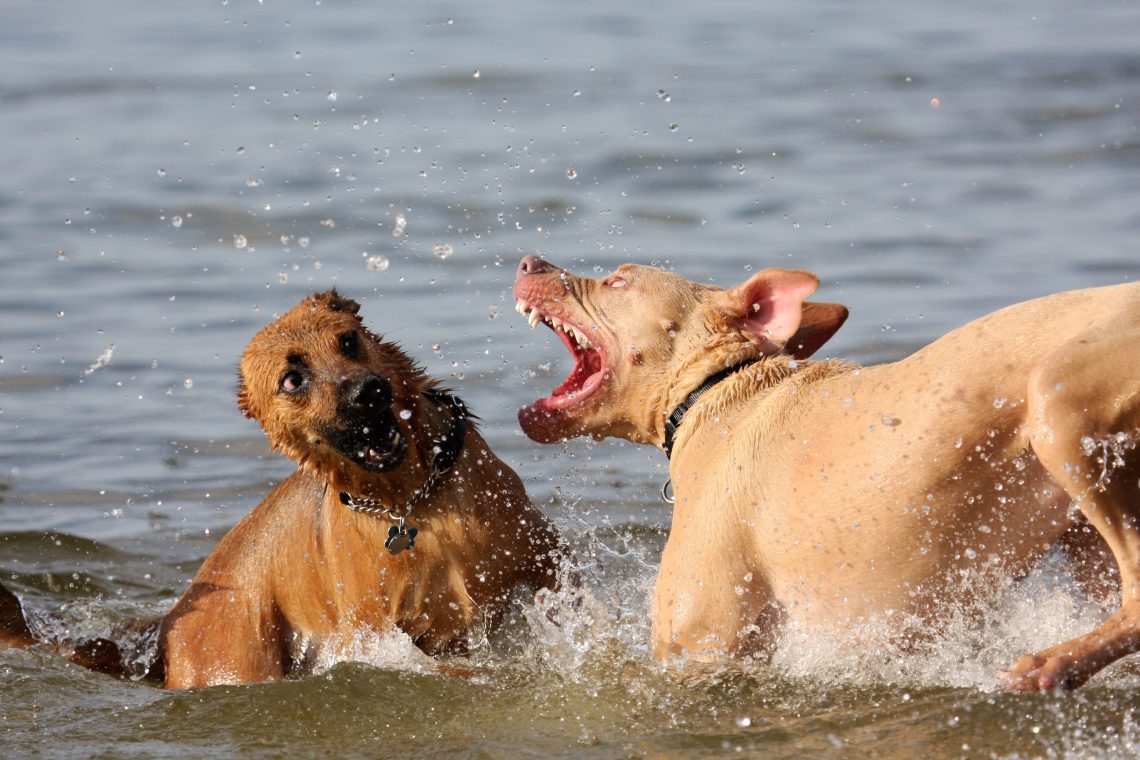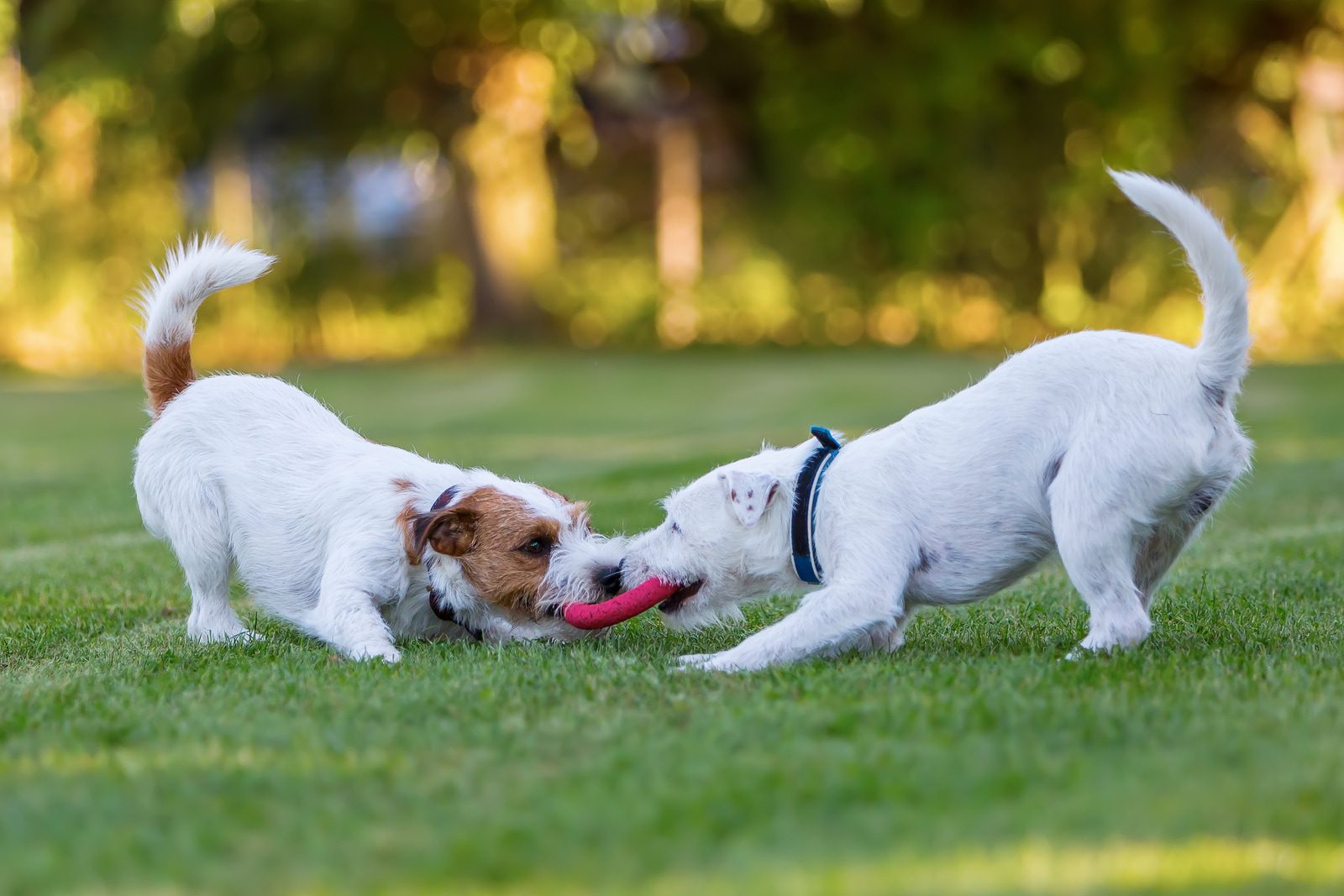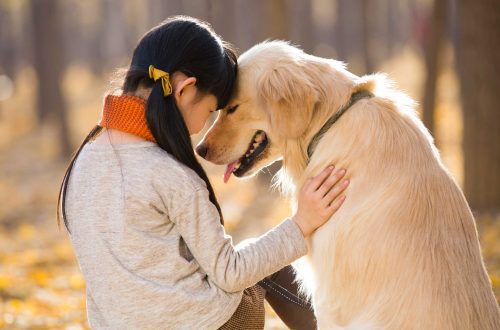
Is your dog playing too aggressively?
At the age of only two weeks, puppies usually already enjoy wrestling with their little brothers. And although they look like funny fur balls, this early play is crucial for the baby’s social development. Playing together with dogs from a very young age teaches them the skills of communication and self-control. After all, if you bite one of your little brothers too hard, he won’t play with you anymore.
Growing up and growing up, puppies do not lose their playful spirit. Let your dog make four-legged friends, but be vigilant. It is up to you to supervise your puppy to make sure he enjoys friendly play and doesn’t get too aggressive with other dogs.
Ready for fun
Dogs show other puppies that they are ready to play with the following signals:
- Rack “game bow”. You can see your dog sticking his front paws forward, lowering his front body and lifting his butt up, facing his friend. Particularly energetic puppies may even lightly tap their front paws on the ground to indicate that they are ready for active play.
- Change of order. Sometimes animals play catch-up, chasing each other in turn.
- Too loud growling or barking. Puppies often growl when they want to play, and your dog may not have outgrown these childhood habits. Growling can sound pretty intimidating, but if other behaviors show you that your pet and her buddy are just having fun, don’t be alarmed.
- Biting while playing. For pet owners, this is usually one of the most difficult signs to understand, because in non-eating situations we associate biting with something negative, but it’s actually nothing to worry about. It is not uncommon for one dog to fall on its back and let its friend bite its ears or nose. Both dogs can use their teeth to play, and as long as they don’t growl aggressively, bark or whine, they’re probably just playing. If you notice that one of them stops liking the game and begins to demonstrate with her appearance that it is time to leave her alone, it is best to breed the animals for a while. This often happens with puppies trying to play with an adult dog who just wants to take a nap.

border crossing
Where is this fine line between the game of wrestling and the aggressive behavior of the animal?
Typical signs of aggressive behavior of the animal are bared fangs, tense stance, trembling or lunging forward. If any of the dogs show aggression, they should be separated immediately. But be careful: never stand between two fighting animals.
Dogs can also show possessive instincts: in relation to their place, food, toy or person. If you notice that your pet has begun to show possessive instincts every time another dog appears near her, it is better to take her away before aggressive behavior appears. In this case, you should work with the obedience instructor to try to understand the reasons for this behavior and wean the pets from it. This can happen when a new puppy appears in a house where an adult dog already lives. An older dog is not used to sharing his toys or his owner’s love, so you may need some extra training to teach him to share his home.
If your dog is prone to aggressive behavior, you’d better avoid situations where he might get into a fight. But if you have a dog that has shown signs of aggression in the past for some time, you should be constantly on the lookout. Relapse can happen at any time. If this behavior becomes regular, consult your veterinarian. You may also need to contact a behavior instructor who will teach your dog how to behave properly if you are having difficulty teaching him friendly play.
How to Raise a Playful Puppy
The most important thing you can do to prevent your dog from becoming scared or aggressive towards other dogs is to start teaching social skills early on. By ensuring that you meet and interact with your peers on a regular basis, you can reduce your puppy’s chances of negative reactions to other dogs. Start by attending obedience classes that will allow your dog to interact regularly with other animals. You can also make new four-legged friends on walks, negotiating with neighbors or visiting a dog park. Make sure your pet is comfortable in these situations and is not intimidated or harassed. Make sure the interaction is positive and don’t force your dog into situations that make him uncomfortable.
Take a break
Sometimes dogs play so much that they get tired and get turned on. If you notice that the fun starts to get out of hand, move the animals in different directions so that no one gets hurt. Distract them from each other by offering something to chew on. You should also consider taking small breaks in the game. Tell the dogs to take time out by having them lie down for a few minutes. If that doesn’t work, just separate them for ten minutes in different rooms: most likely, by the time they are reunited, they will have calmed down.
Watching the joyful play of dogs is a great pleasure, and such games should be encouraged. Try to make sure that your pet can interact with other dogs at least once a week. Even if they don’t start playing but just sniff each other, it will be good for their development. It is also a good way to encourage good behavior.





